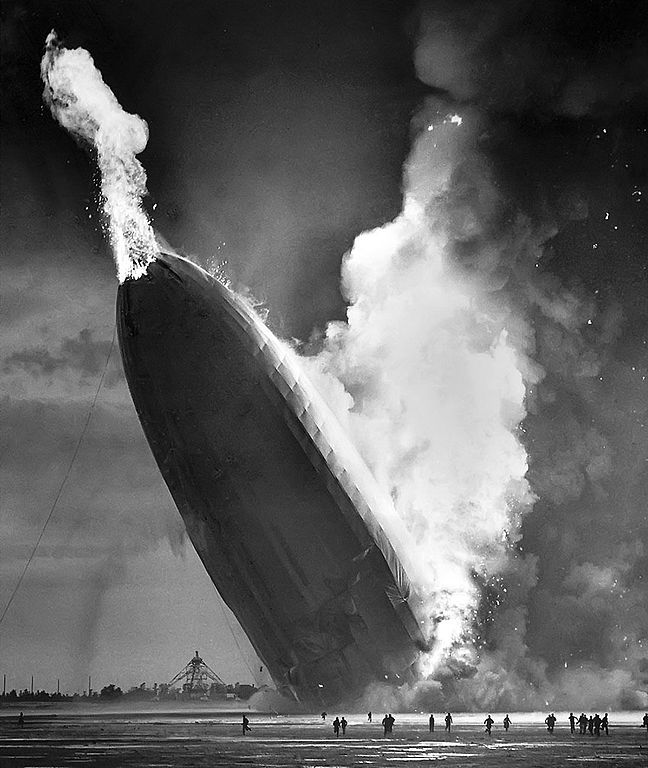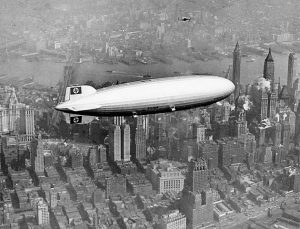
Photo originally taken by Murray Becker, AP
Public Domain
On 6 May 1937 the German passenger airship Hindenburg caught fire and was destroyed while trying to dock at Naval Air Station Lakehurst near Lakehurst, New Jersey. Of the 97 passengers and crew, 35 perished and one worker was killed on the ground.
Airships were a popular way to travel. They were comfortable and often afforded their passengers the ability to see things that passengers of airplanes would not often see. The Germans had perfected the use of airships while the United States suffered humiliating crashes that confounded designers. The German Zeppelins used hydrogen for many years without any major incident until 1937.

The event was caught on newsreel and on radio. Herbert Morrision’s radio coverage is classic and you can listen to at History.com. You can also listen to this one on YouTube which points out that Morrison’s voice was much higher than normal due to the tape recording speed (he was known for his deep voice). His actual audio report sounds different when you hear it as it ought to have been. A British Pathe newsreel of the disaster be viewed here.
While sabotage was suspected, neither the American or German inquiries concluded that was the cause. The American report concludes:
The cause of the accident was the ignition of a mixture of free hydrogen and air. Based upon the evidence, a leak at or in the vicinity of cell 4 and 5 caused a combustible mixture of hydrogen and air to form in the upper stern part of the ship in considerable quantity; the first appearance of an open flame was on the top of the ship and a relatively short distance forward of the upper vertical fin. The theory that a brush discharge ignited such mixture appears most probable.
The many theories that continue to persist are:
- Sabotage
- Lightning
- Static Spark
- Engine Failure
- Incendiary Paint
- Hydrogen Leak
- Fuel Leak
Mythbusters examined the incendiary paint hypothesis and concluded it did not cause the catastrophe. Many believe the most likely reason for the explosion is that a tiny tear in the fabric or an exposed piece of metal was the entry point for static electricity to ignite the hydrogen. Hydrogen would never be used again for airships after this.
Airships faded from use though the famous Goodyear blimps over sports and other events are used to film the events below. And with the desire to conserve our environment these days, helium filled airships may yet return as a means of travel.
Sources
—. “The Hindenburg, Before and After Disaster.” Encyclopedia Britannica, www.britannica.com/story/the-hindenburg-before-and-after-disaster.
—. “The Hindenburg Disaster.” HISTORY, 5 May 2024, www.history.com/this-day-in-history/the-hindenburg-disaster.
—. “Hindenburg Disaster.” Wikipedia, 5 May 2024, en.wikipedia.org/wiki/Hindenburg_disaster.






